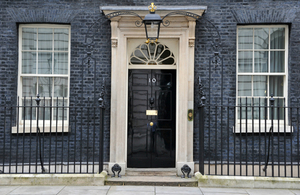You would hardly believe the ridiculous things that 'genius' men have said about women's capabilities. I can't help thinking that if Ada Lovelace had been a man we'd have had computers at least one generation before we did. Anyway, here are my views on a book that deals with the issue.
Read MoreCreating a culture of innovation, part 2: Make The Professional Development Interesting
In this, the second part of our new series on creating a culture of innovation, we look at why it's important to make professional development activities interesting, with some ideas on how to do so.
Read MoreCreating a culture of innovation, part 1: Conferences and exhibitions
How, as leader of Computing in your school, do you create a culture of innovation, ie of trying out new things? This is what we explore in this new ten-part series.
Read MoreUpdate of 7 Reasons to have an educational technology library
Why create a subject library for Computing? And what should it contain?
Read MoreNew Education Secretary: some thoughts
No. 10 Downing Street, where it all happened. Photo is copyright of www.gov.uk.
Just as I was going to take a bit of a break from updating this website several times a week, in order to focus on a Bett guide, Bett preview and a couple of books, the Prime Minister decided to hold a cabinet reshuffle. So inconsiderate. Anyway, as part of that reshuffle, Justine Greening, the Education Secretary, resigned. She has been replaced by Damian Hinds.
I liked Justine Greening for two reasons. First, she struck me as someone who actually listened to teachers and other educationalists. Secondly, since she took over the reins at Sanctuary Buildings education technology and associated matters were back on the agenda. After several years of 'coding, coding, coding' there was suddenly a real possibility that issues such as digital literacy might be promoted -- really, not just as lip service.
Ms Greening was due to open the Bett show, which was also a good sign methinks, and I had been hoping to meet her.
So, I don't know where ed tech will stand on Mr Hinds' watch. I do know that he faces a few other challenges, such as teacher recruitment, school funding and, I should think, change fatigue. I was somewhat alarmed when I read somewhere that he is a reformist, because what I think we need for a while is a consolidationist, if such a word exists. On the other hand, he did tweet:
Delighted to be appointed Education Secretary – looking forward to working with the great teachers & lecturers in our schools, colleges & universities giving people the opportunities to make the most of their lives.
I note the use of the word 'with' as opposed to 'on' -- always a good sign!
If reform is back/still on the agenda, one especially welcome change would be the reintroduction of a wider variety of IT-related qualifications at GCSE and 'A' Level. As well as providing variety, it would probably go some way to encouraging more girls to take the subject to higher levels. (See the pretty grim statistics I cited in my article about the Royal Society report, After the Reboot.)
This website wishes Mr Hinds all the best in his new role. And if he needs any suggestions of names of educators who have been around for a few years and who also know about education technology I'd be happy to supply them.
Computing in the UK
The Royal Society recently produced its report into Computing, After the Reboot. Here are my notes and comments on that report.
Read MoreBett2018 and other ed tech conferences: Preparing for a full-on week
UPDATED. The biggest ed tech event in the UK -- Bett -- is nearly upon us. But it's not the only conference going on that week.
Read MoreWaspish behaviour. Picture from Pixabay. Licence: CCO
Intimidation in public life, and education technology
Should social media platforms be regarded as mere repositories of content, which by implication is thus not their responsibility, or publishers, subject to the same laws and restrictions as other publishing media, such as newspapers? This is one of the discussion points arising in this interesting report about the intimidation on social media of members of Parliament and other public figures. It's especially interesting given the fact that this week the German government brought into effect a new law regarding social media companies.
Read MoreHere's what you missed in Digital Education...
Here's a glimpse of some of the things you will have missed recently if you don't subscribe to my newsletter, including the chance to buy discounted books from Routledge and BCS -- up to 40% off in some cases. At the time of writing it's not too late to take advantage of the offers, some of which are exclusive to newsletter subscribers. Read on for details of how to subscribe.
Read MoreImage from Pexels Licence: CCO
What makes a good training day? 10 suggestions and a link
Training days don't have to be dire. If you have choice in how you spend at least some of the day, here are ten suggestions, plus a link to a humorous audio recording.
Read MoreOut with the old, in with the new
2017 Retrospective: coming soon in Digital Education
I've been compiling a retrospective in the form of articles from the Digital Education newsletter in 2017. Here's the list of articles included.
Read MoreThe final issue of my newsletter, Digital Education
A quick look at what's in the latest issue of my newsletter, Digital Education, out later today (with any luck!).
Read More10 reasons to use comics and cartoons in the classroom
There are at least ten good reasons to use cartoons or comics in your lessons. This article explains what they are, with links to research and useful resources.
Read More14 things to check when using education technology
This article was originally published in 2008. Apart from a few obvious points, such as the references to CDs, large monitors and, in some schools these days, computer rules, very little requires changing in terms of the advice. But the interesting aspect of the article is, I think, what is implicit. Having two computers out of commission would have been an issue in those days. Bring Your Own Technology had yet to be a possibility for most pupils. Laptops were still expensive enough to make class sets of them something to dream about. There were tablet computers, but the iPad was still two years in the future. The reference to planning to use the internet: nowadays it's virtually unavoidable because so much is online. When you think about all that, it is hard to remember that the article was written less than a decade ago!
Read More3 education technology blog posts you should check out
A few useful articles that you may not have come across before. They cover:
- project-based learning
- teen depression and cyberbullying and
- how to reduce the possibility of having your training stolen.
Yes! Picture by Mohamed1982eg. Licence: CC0
Quick tips: creating a stimulating computing classroom
How can you make your computing classroom as vibrant as possible. Here's a link to an article I posted back in August 2017 containing 8 suggestions.
Read MoreThe importance of touch in Computing
Making it possible for students to come face to face with real things from times gone by can have an electrifying effect on them. This is especially so when teaching Computing.
Read MoreQuick look: Baking with Kafka, by Tom Gauld
A great sideways glance at modern life, including our relationships with technnology.
Read MoreFrom Pixabay. Licence: CC0
16 Ways to Make the Most of Teaching Assistants
How can you make best use of teaching assistants? Collaboration, professional development and planning together are just three of the suggestions made here.
Read MoreReading list! by Terry Freedman
Spreadsheet special, analysis and a prize draw
Read on for a heads-up about what's coming up in the next issue of Digital Education, our free newsletter.
Read More









